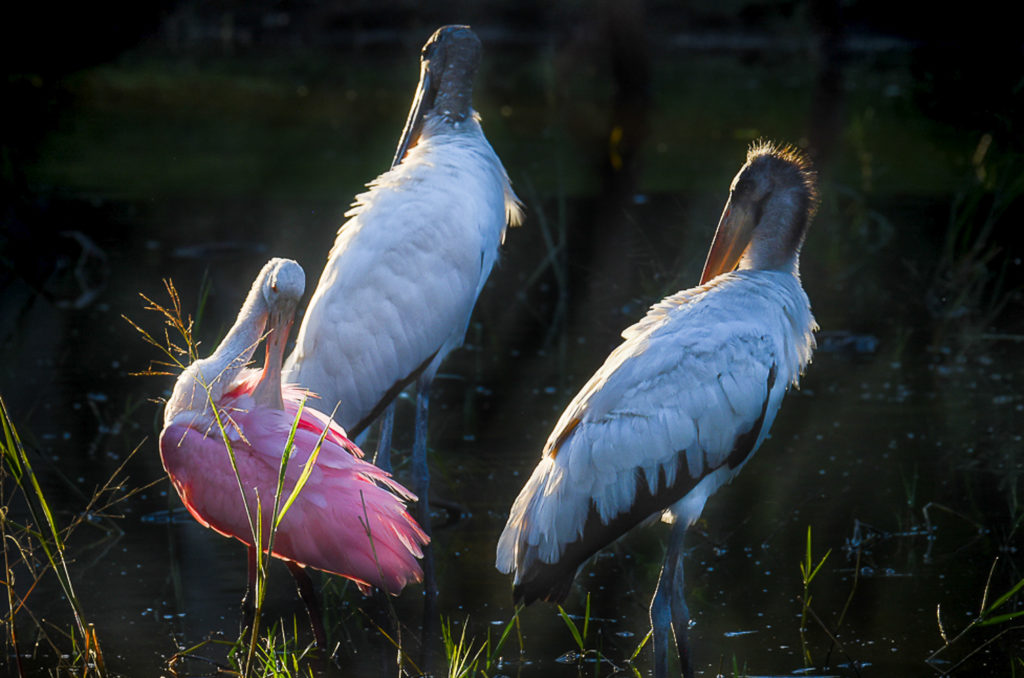
The sun was just breaking over the grandfather oaks that surround the parking lot lake at Riverbend Park in Jupiter, Florida.
I was unloading my bicycle from the back of the car while glancing across the shallow pond. A burst of flaming color stood out in the midst of a flock of ugly gray and white woodstorks. It was the most striking bird found in Florida—The Roseate Spoonbill! With a bright pink body, red shoulders and an orange-yellow head, “Rosy” is on every nature photographer’s bucket list.
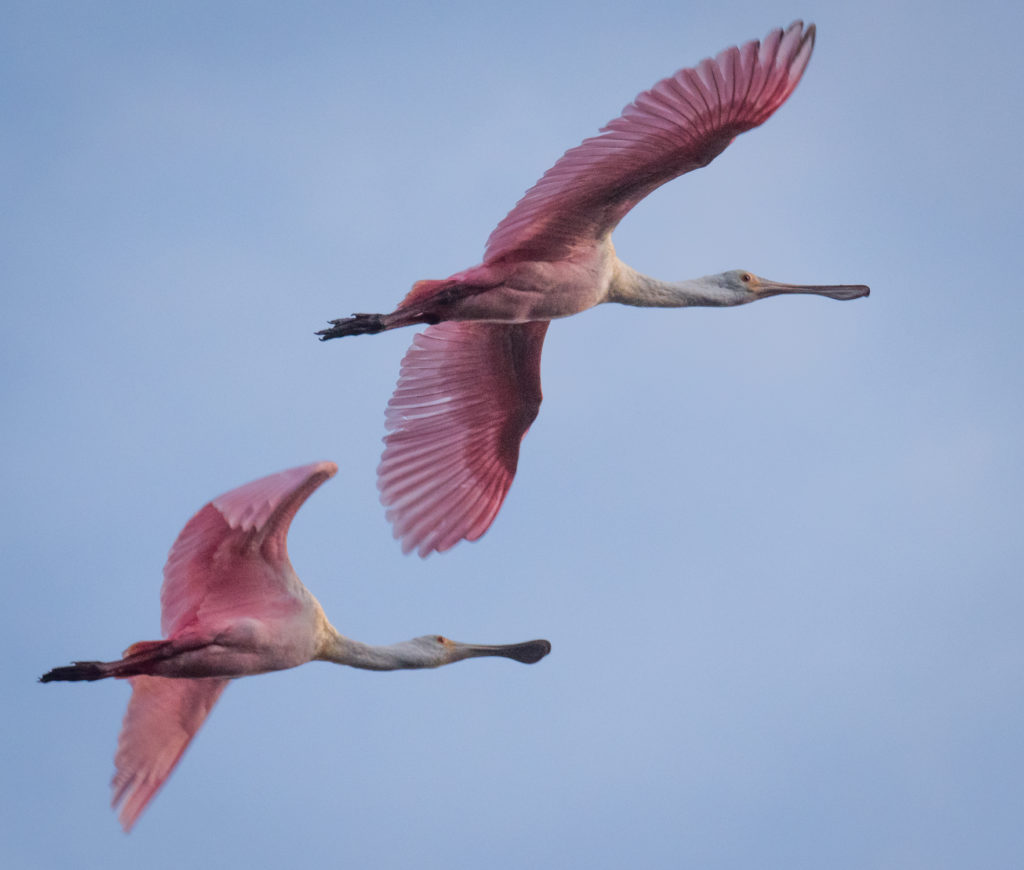
Virtually eliminated by plume hunters in the 1860’s, the Roseate Spoonbills have now repopulated (Thanks to the Audubon Society) and can be found on both coasts of Florida and Louisiana. However, compared to
the abundance of Egrets and Herons seen in Florida wetlands, the Spoonbill is much more difficult to locate.
Where and when should you look?
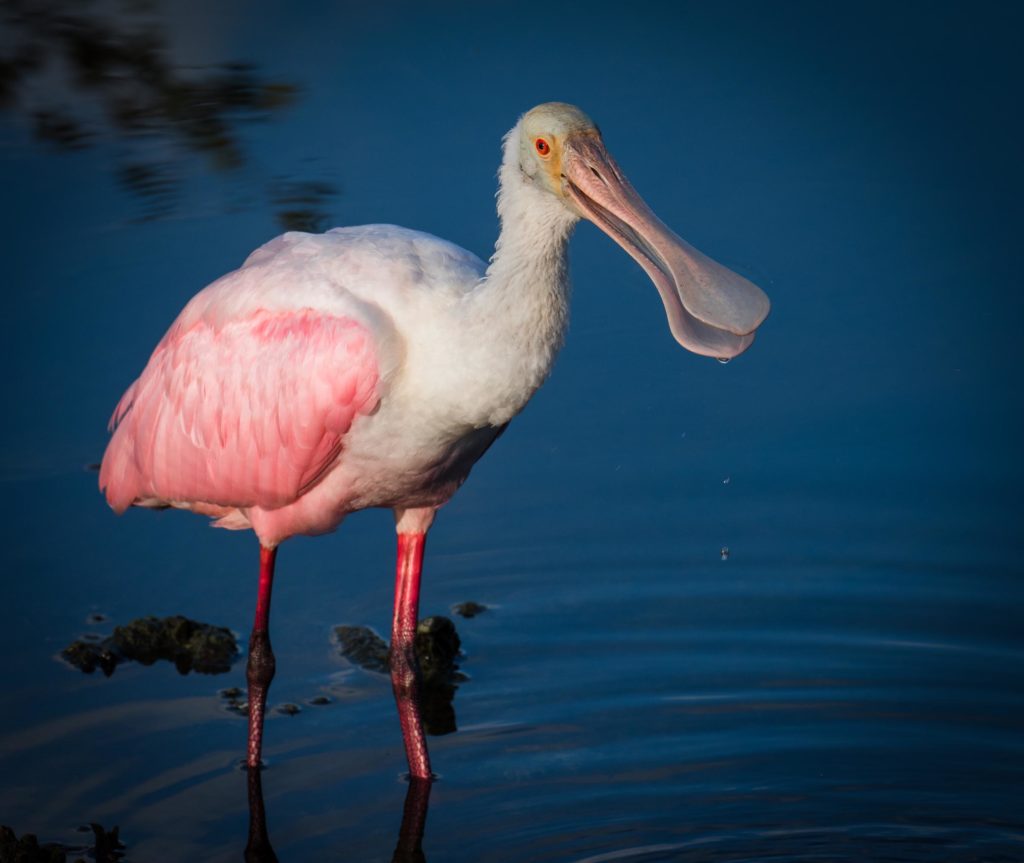
My experience at Riverbend, was not common. The roseate was alone among other birds, and only feeding. I took pictures of the large wading bird sweeping its long spoon shaped bill for only about ten minutes before it took flight and was gone—but I was hooked and intent on find more opportunities to find and photograph this amazing waterbird.
I learned that Spoonbills sometimes roosted in Southern Palm Beach County within Wakodohatchee Wetland Preserve and Green Cay Preserve. I knew from my short experience that first sunlight was going to provide my best chances of seeing a spoonbill up close and also warm golden light for a dramatic image. At both Green Cay and Wakodohatchee, I was rewarded with several specimens to shoot in the cooler months of February and March during mating and nesting season.
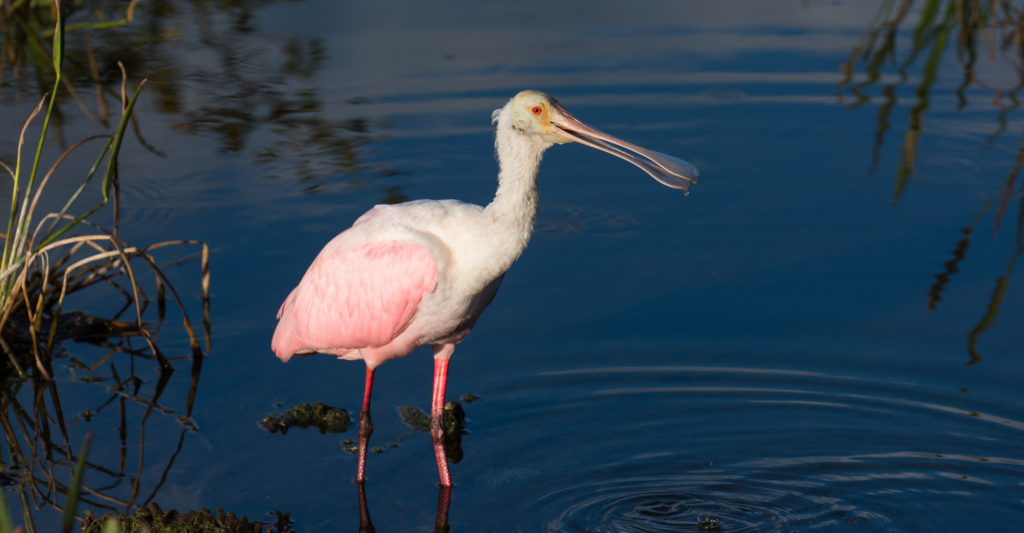
Capturing a full flock of Spoonbills would elude me until I took advantage of a “Nature Hike” hosted by Palm Beach County Environmental Resources Management. This organization has successfully protected from development thousands of acres of land in and around the Palm Beaches.
The agency has carefully restored and created dozens of nature preserves that are open to the public such as Pine Glades Preserve in Jupiter. A biologist from the department led a hike across a few miles of flat wetlands dotted with cypress stands. “Any of you interested in birds, “she welcomed
our small group of hikers, “will see that we currently have seven Spoonbills roosting in those trees behind me.”
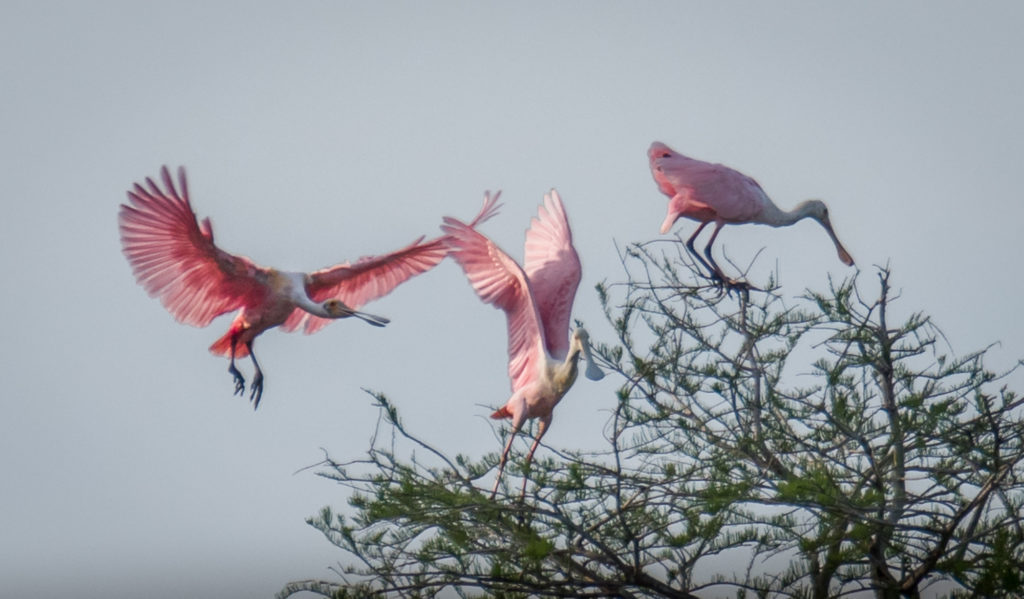
The spoonbills were actively flying, feeding and landing in their favorite treetops, and I had a wonderful evening of tracking them in flight and watching them “come home to roost”. A nesting pair, is still on the bucket list. North America’s most striking bird, is
now my absolute favorite photographic subject.
Equipment and Technique:
300 to 600mm lens and monopod for stability.
Set up with pinpoint “back button focus”
Always focus on eyes!
Shoot in RAW, underexpose a stop to not blow out highlights.
Keep shutter speed above 2,000 for flying birds, unless you are purposely looking for blurred wings (which is a nice effect as well)
Edit in Lightroom, enhancing vibrance and contrast slightly.
Open shadows to highlight the crimson eye. For more information about
PhotoMasters Workshops, contact Bob Gibson at rjg@rjgibson.com or
